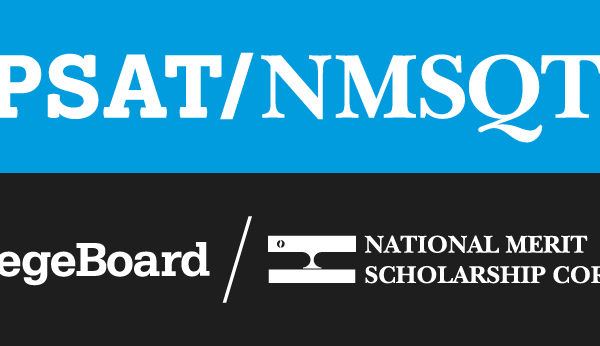Starting in the 2023-24 school year, College Board will transition to a fully digital administration of the PSAT and SAT. While the digital SAT won’t begin until Spring 2024, the PSAT will be digital starting this fall, for rising juniors. We’re continually learning more information as College Board releases it, but here’s what we know about the digital PSAT so far!
It will look A LOT like the digital SAT
While College Board has released several digital SAT resources both on its own site and through Khan Academy, it has not yet distributed any digital PSAT material. We have always said that the PSAT is a slightly easier version of the SAT, and College Board seems to agree: It is literally directing students to its digital SAT resources for practice:
“The PSAT/NMSQT is almost the same test as the SAT, so if you want to take practice tests online you can take the practice SAT tests on Official SAT Practice on Khan Academy®. Your answers will be scored automatically at the end of your test, and the timer will keep you on track with section time limits.
After your practice test, you’ll get personalized practice recommendations so you can focus on what you missed.
Note: You’ll need to log in or sign up for a free Khan Academy account to start your test.”
–College Board website
Essentially, College Board is billing the shift to the digital PSAT this fall as a way for students to “practice” for the digital SAT in Spring 2024. So, what will the exams actually look like, and how might some test prep benefit your child?
Students take it using an app – but still at schools and testing centers
Students will take the digital PSAT on College Board’s Bluebook app, which students can download onto their own device or on one provided by their school. Each student will receive a different exam in Bluebook. The app:
- will save students’ progress and stop the timer in the event of an internet or power outage, allowing students to pick up where they left off.
- will prevent students from opening web browsers or other applications to search for correct answers.
- is equipped with Desmos, a highly sophisticated graphing calculator that many students are already familiar with, though students can use their own calculators if they prefer.
- allows students to mark problems they want to go back to, annotate passages, and cross out answer choices.
Digital exams will still be offered only at schools and test centers – students can’t take them at home.
The digital test’s scores should come back more quickly. All students should have their scores back by late November, which is earlier than in years past. The test will also be more secure and less vulnerable to cheating, as every student will take a different exam.
It is section adaptive
As with the paper-pencil exams, the digital PSAT and SAT includes a verbal (Reading/English) and Math section. In each section, students will first get a module with a mix of easy, medium, and hard questions. Depending on their performance on that first module, they will advance to an easier or harder second module, which will broadly determine their score range.
For each section, there will be overlap in scores between the highest scorers in the easy module and the lowest scorers in the hard module, but if a student lands in the easier second module, they will not be able to attain the maximum score of 800; their score will be capped somewhere below that.
Some other specific differences from the paper-pencil exams:
- Every Reading and English passage will be short and only have one question, as opposed to long passages with multiple problems
- There will no longer be a “no-calculator” math section – students will be permitted to use a calculator on every math problem
- Each math problem will only have one question; in the past, multiple problems could be linked to the same information
Not all students will take the digital, adaptive exam. Students who receive accommodations (extra time, etc.) will still take the “linear,” non-adaptive, paper-pencil PSAT and SAT.
It’s a shorter test
The digital SAT contains fewer questions and shorter passages, reducing testing time from 3 hours to 2 hours and 14 minutes. The PSAT will likely show a similar decrease, which should be welcome news to high schoolers.
While the format of the tests is changing, the scoring is not. For a refresher on how the PSAT is scored and the levels of National Merit qualification, click here.
How to practice for the Digital PSAT
Ask us! Almost every junior will take the PSAT, so given the novelty of the digital format and the potential rewards of National Merit Qualification, it may be worth your child’s time to prepare for the exam. At Galin, we have spent the last several months preparing for this seismic change in the SAT by exploring the practice tests and the College Board’s various specifications and practice materials. We are putting together several options for PSAT prep, from short lesson packages to classes. While this is new ground for all of us, we can help your child train for the PSAT so that they enter the digital testing world knowledgeable and ready!




